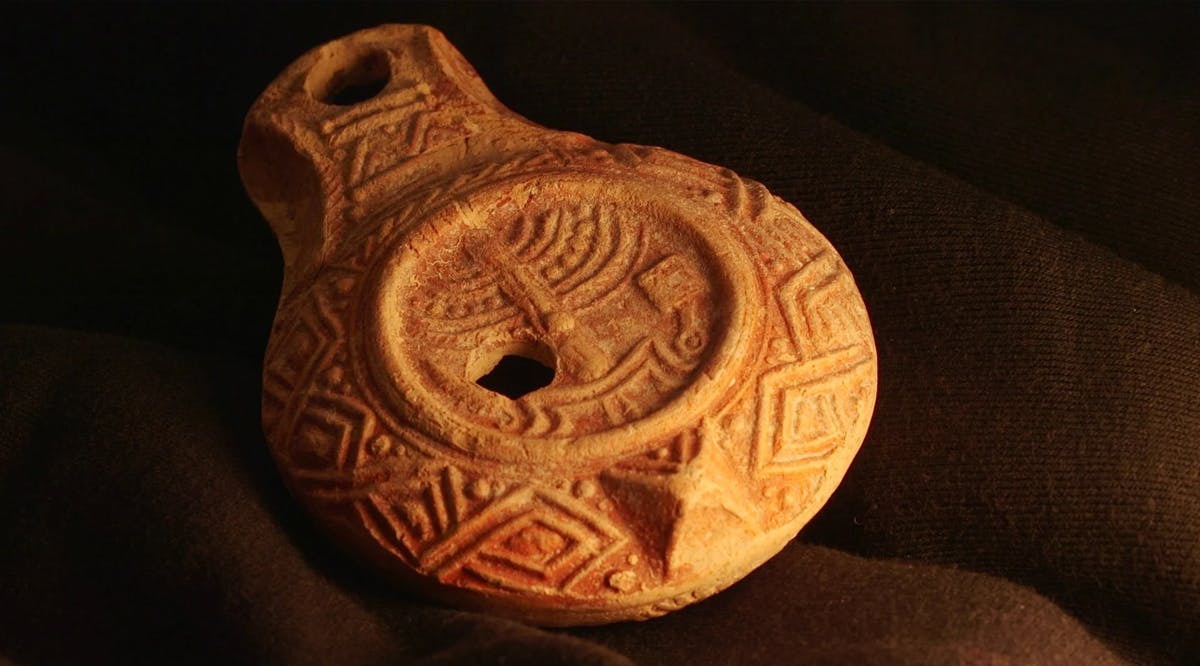
Rare Oil Lamp with Temple Menorah Found from Time When Romans Barred Jews from Jerusalem
A rare, 4th-century AD ceramic oil lamp recently discovered during Israeli Antiquities Authorities excavations near the Mount of Olives in Jerusalem will be displayed to the public for the first time during the current Hanukkah holiday, the IAA said Thursday, December 26.
The unusual lamp is decorated with imagery related to the services in the Jewish Second Temple in Jerusalem, including a Temple menorah (which had seven branches, unlike the nine-branched menorahs used during Hanukkah).
Also depicted on the small lamp are an incense shovel, which Temple priests used when making offerings, and a lulav, the date palm frond used during the Sukkot holiday. The lamp was unearthed a few months ago and was discovered intact, a rarity for objects of the type, an IAA official told Israeli media.
After examination, the “outstanding” artifact was determined to be 1,700 years old, dating from the late Roman period, making the find “particularly surprising, since we have very little evidence of the existence of a Jewish settlement in and around Jerusalem from this period,” said Michael Chernin, excavation director.
The Second Temple was destroyed in 70 AD, and the Roman emperor Hadrian suppressed the Bar Kochba Revolt in 135 AD, after which Jews were expelled from Jerusalem, and then renamed Aelia Capitolina. (TOI / VFI News)
The suggestions, opinions, and scripture references made by VFI News writers and editors are based on the best information received.
Want to see more from VFI? Follow us on Facebook: https://www.facebook.com/visionforisrael and hit “like” if you like us!